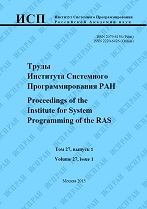|
This article is cited in 2 scientific papers (total in 2 papers)
3D avalanche flow modeling using OpenFOAM
D. I. Romanovaab
a Federal State Institution "Scientific Research Institute for System Analysis of the Russian Academy of Sciences"
b Lomonosov Moscow State University
Abstract:
In this paper, a model of a snow avalanche was created with the help of open source CFD software OpenFOAM. The avalanche is considered as a turbulent two-phase flow — snow and air. We take incompressible Herschel-Balkley fluid as a model of snow. Air is a newtonian fluid. For tracking and locating the free surface we use the volume of fluid (VOF) method. In calculations we use solver interFoam which is based on the VOF method. The K−ε turbulence model was used. Navier-Stokes equations, rheological ratios, equations for turbulent kinetic energy and dissipation are used to determine the model. The avalanche occurred at the 22nd site on the Ukspor mountain was modeled. Computational domain was made using digital terrain model in ASCII GRID format. The shape of snow deposits area was calculated and compared with the real data. The velocity field of flow, pressure distribution, the field of volume snow fraction were obtained for different time instances. The value of the average velocity of the flow was 44,8 m/s, the value of the maximum velocity of the flow (including snow-dust cloud) was 78 m/s. These results allow to determine the avalanche hazard area and help to optimally design the defense systems. In future it is planned to simulate this event using more detailed grids and realize this model in other software for example INMOST or with own code to compare the results.
Keywords:
glaciology, turbulent flow, two-phase medium, Herschel-Bulkley fluid.
Citation:
D. I. Romanova, “3D avalanche flow modeling using OpenFOAM”, Proceedings of ISP RAS, 29:1 (2017), 85–100
Linking options:
https://www.mathnet.ru/eng/tisp102 https://www.mathnet.ru/eng/tisp/v29/i1/p85
|

| Statistics & downloads: |
| Abstract page: | 584 | | Full-text PDF : | 358 | | References: | 60 |
|




 Contact us:
Contact us: Terms of Use
Terms of Use
 Registration to the website
Registration to the website Logotypes
Logotypes









 Citation in format
Citation in format 